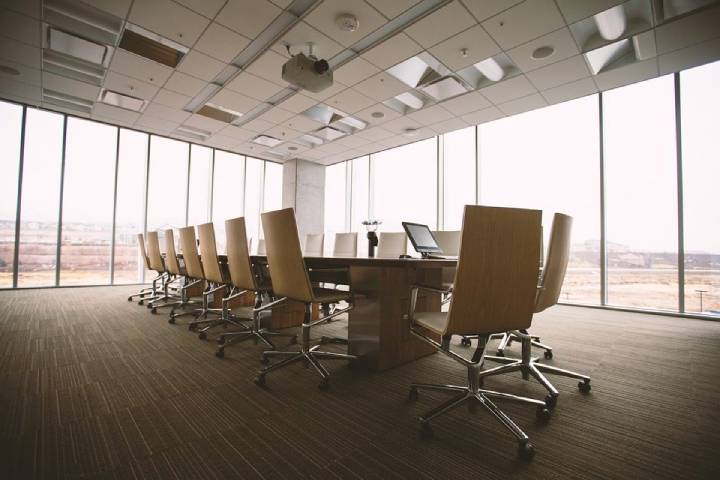Cleanrooms are spaces designed especially for specific industries where small particles can adversely compromise the manufacturing process or the product. Cleanrooms differ in size and complexity, depending on the gravity of the manufacturing process and outcome.
These are popularly used in industries like semiconductor manufacturing units, pharmaceuticals, biotech research, and medical machinery manufacturers.
A cleanroom reduces the overall particulate contamination and also helps control specific parameters like temperature, humidity, and pressure. The High-Efficiency Particulate Air (HEPA) filters are critical components in any cleanroom design process.
These are used to trap particles as small as 0.3 microns. All the air that comes to the cleanroom passes through the HEPA filter. In rare cases where strict cleanliness is required, Ultra Low Particulate Air (ULPA) filters are used.
1. Cleanroom Airflow Principles
Cleanrooms have to operate in particulate-free air. This is achieved via HEPA and ULPA filters using the principles of laminar and turbulent airflow. Laminar airflow systems (or unidirectional airflow systems) filter the air directly in a constant stream.
These airflow systems are used throughout the ceilings to maintain the constant and unidirectional airflow. Laminar airflow is generally used in portable workstations like LF hoods and is a compulsion in ISO-1 through ISO-4 categorized cleanrooms.
2. Cleanroom Classifications
Cleanrooms are generally classified based on clean air inside them. There are specific international standards that define the quantity and size of particles per volume of air in the room.
The ISO classification system ISO 14644-1 is the primary authority that has pre-defined classifications and is strictly followed in the US and Canada.
The standardized cleanroom classifications are ISO 1, ISO 2, ISO 3, ISO 4, ISO 5, ISO 6, ISO 7, ISO 8, and ISO 9, where ISO 1 is known to be the “cleanest” whereas ISO 9 is said to be the “dirtiest” of all the classification; ISO 7 and ISO 8 are used popularly in many industries.
3. 5 Cleanroom Design Principles
a) Assess the total number of employees and material flow
It is always essential to evaluate the total number of people and material flow that is going to be interacting with the cleanroom. Almost 80% of the time, cleanroom workers are the reason for contamination and violation of other critical cleanliness protocols.
That is why it is always essential to isolate cleanroom operations using doorways and pathways. The best practice is to have single access in the rooms to prevent any unnecessary exposure.
b) Selecting the right cleanroom classification
To choose a cleanroom classification, one must know the primary cleanroom classification standards. After looking at the rules, it is essential to understand what particulate performance do your operations require.
This Institute of Environmental Science and Technology (IEST) Standard 14644-1 has provided different cleanliness criteria: 1, 10, 100, 1000, 10000, and 100000 are the categorizing numbers of particles of various sizes.
c) Determining the air pressure
Always maintaining a positive air space pressure with context to the adjoining “dirtier” cleanliness classifications spaces is vital for preventing contaminants from the infiltration process to the cleanroom.
It is, however, complicated to maintain a consistent cleanliness classification standard when the space air pressure is neutral or negative.
Many research studies have found that a pressure difference of 0.03 to 0.05 in w.g. It is sufficient pressure to reduce contaminant infiltration. But space pressure differentials above 0.05 in w.g. do not provide a decent contaminant infiltration control.
d) Determining the airflow
The total space cleanliness classification is a critical variable in analyzing a cleanroom’s supply of airflow. A designer will need to evaluate their specific applications and have to determine the air change rate that has to be applied.
Other variables like space supply airflow, process exhaust airflow, air infiltration through doors/gaps, and air exfiltration also affect the space airflow supply.
e) Determining space air exfiltration
A large number of cleanrooms around industries are under positive pressure, which results in planned air infiltration in adjoined spaces that have lower static air pressure and unplanned air exfiltration through electrical outlets, light fixtures, window frames, door frames, wall-floor interface, wall-ceiling interface, and access doors.
Always make sure that rooms are not hermetically sealed and do not have a leakage. A well-sealed cleanroom will have about a 1% to 2% leakage rate.
4. Conclusion
Cleanrooms are like any other mechanical brilliance. If designed and maintained correctly, they function with high efficiency. Cleanrooms are highly vulnerable and should always be supervised by professional engineers with plenty of experience in the field of cleanrooms and machinery.
Tech Trends
Related posts
Leave a Reply Cancel reply
Hot Topics
Categories
- Ads (5)
- Animes (25)
- Artificial Intelligence (AI) (35)
- Augmented Reality (AR) (10)
- Automotive (9)
- Bitcoin (16)
- Blockchain (24)
- Business (244)
- Business Intelligence (3)
- Cloud Computing (23)
- Computer (128)
- Concrete Technology (1)
- Cryptocurrency (10)
- Cybersecurity (42)
- Data Science (9)
- Database (4)
- DevOps (6)
- Digital Marketing (76)
- Digital Workplace (14)
- Ecommerce (1)
- Education (28)
- Electric Vehicle (EV) (1)
- Electronics & Hardware (17)
- Entertainment (42)
- Fabrication (3)
- FAQ's (1)
- Finance & Marketing (47)
- Gadgets (35)
- Games (8)
- Gear (29)
- HTTPS (1)
- Industry (46)
- Information Technology (90)
- Internet (413)
- Internet of Things (IoT) (41)
- Job (25)
- Machine Learning (6)
- Marketing (92)
- Mobile Apps (21)
- Movies (11)
- Natural Language Processing (6)
- News & Trends (109)
- Programming (4)
- Science & Technology (235)
- Security (81)
- SEO (56)
- Services (36)
- Social Media (73)
- Software (99)
- Sports (1)
- Technology (306)
- Telecom (6)
- TikTok (5)
- Tours & Travels (9)
- Uncategorized (11)
- Virtual Reality (VR) (7)
- VoIP (4)
- Web Technology (42)
- Workforce (17)
- Workspace (6)



Stay connected